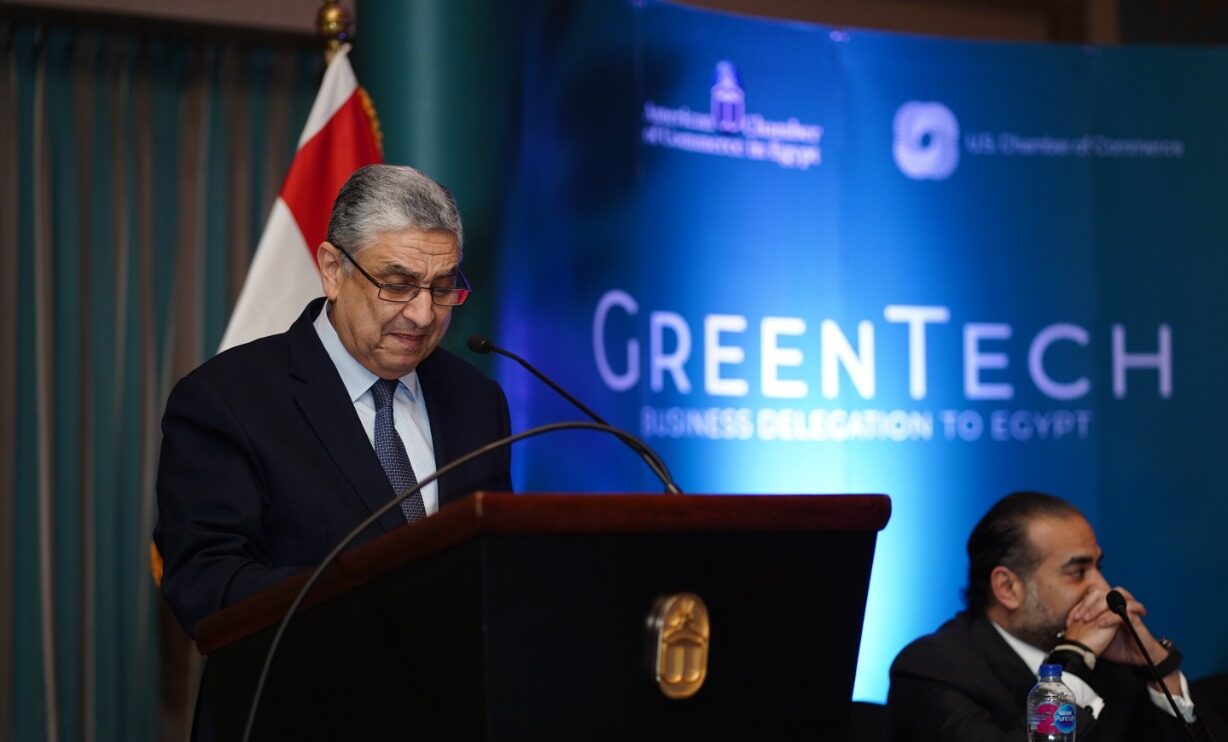Egypt aims to create a green corridor to connect all electricity produced from renewable sources that reach a capacity of 70 GW, says Minister of Electricity and Renewable Energy Mohamed Shaker.
The combination of solar, wind, hydro, and hydrogen power generation stations in Egypt is enough for the Electricity Ministry to develop a dedicated power grid for those stations, Shaker explains during a ministerial roundtable discussion at the U.S. GreenTech Business Mission on May 16.
In a speech, Shaker showcased available land for establishing renewable energy projects (solar and wind) in Suez Gulf, West Nile, East Nile, Fares 1 and 2, Kom Ombo, Benban and Zafaraana. He called on private investors to study areas of interest to finance such projects.
Egypt aims to raise the portion of green electricity in the country’s energy mix to 10 GW by 2023. The ministry plans to have 42% of the grid-supplied from renewable power stations by 2035.
“We have another strategy for 2040 which will focus on increasing energy efficiency and increasing power supply diversification,” Shaker says.
Under these targets, solar would fuel 25% of the total electricity generated, wind 14%, and hydropower 2%. Most of this capacity is expected to be delivered by the private sector. The International Renewable Energy Agency (IRENA) stated that Egypt could supply as much as 53% of its electricity using renewables by 2030.

The increase in private sector participation in the power sector is expected to drive growth in renewables, which has seen the most private investment activity. This growth has also been supported by the Investment Law 72 of 2017, which helps attract local and foreign investors by removing obstacles and streamlining procedures across many sectors including electricity. Currently, the government is recruiting private investors mostly through auctions and tenders for the development of large renewable energy projects, backed by incentives such as tax rebates, VAT exemptions, and loan guarantees.
Realizing the importance of private sector engagement, Egypt hosted for the first time ever a U.S. GreenTech Business Mission from May 14-17 organized by the American Chamber of Commerce in Egypt (AmCham Egypt,) the U.S Chamber of Commerce and the Office of the U.S Special Presidential Envoy for Climate. The mission’s delegation included American investors, policymakers, eco-friendly financiers, and technology companies who met with Egyptian companies and government officials to learn about partnership and investment opportunities in sectors ranging from energy to healthcare, agriculture, aviation, construction and water resource management.
Power of Together
During a ministerial roundtable discussion at the U.S. GreenTech business mission, Shaker stressed on the importance of increasing the private sector’s involvement in realizing those plans.
“We are leaning very hard on the private sector to invest in renewables,” he says. Accordingly, the Ministry is actively allocating land for such projects, providing wind and solar atlas data to investors, adjusting the feed-in tariff to remain competitive, and imposing 2% customs and taxes on imported renewable energy equipment used in such projects.
Shaker stressed that while the feed-in tariff is the most popular way for the government to cooperate with the private sector, the Ministry has “other arrangements to cooperate with the private sector.” In the upcoming COP27, Egypt will have incentives for new investors that want to invest in Egypt. Electricity transmission would remain under government control while electricity generation and distribution would be open to the private sector.
Ultimately, the Ministry intends to build sustainable power grids powered solely by renewable and clean energy sources. The first step is to develop hydrogen fuel stations that use clean energy to convert hydrogen gas into an emissions-free fuel (Green hydrogen).
“We will announce our Green Hydrogen Strategy soon. Its main target is for the fuel to generate 20 GW of electricity by 2027. We should announce several projects by COP27,” Shaker says.







